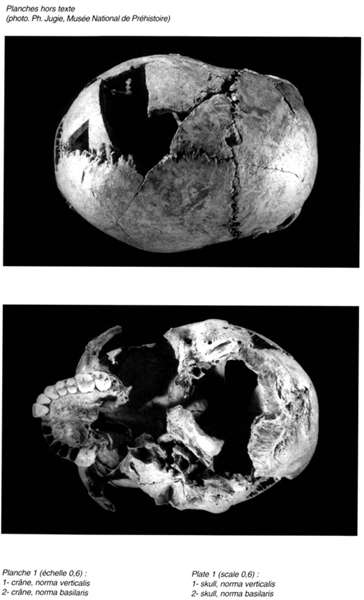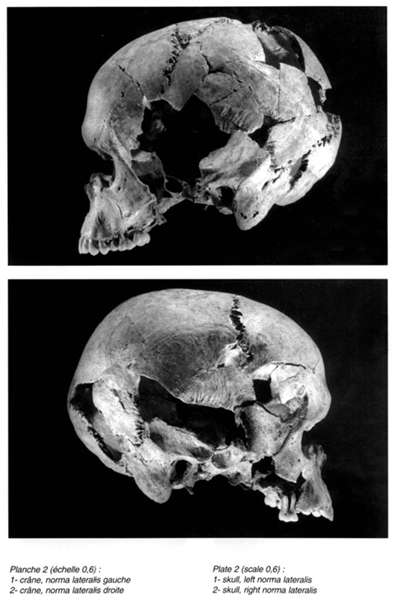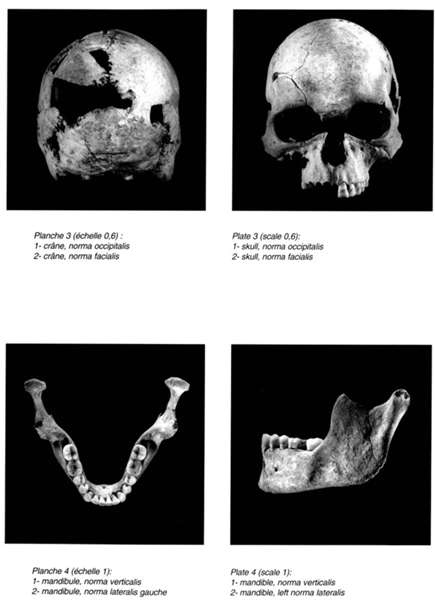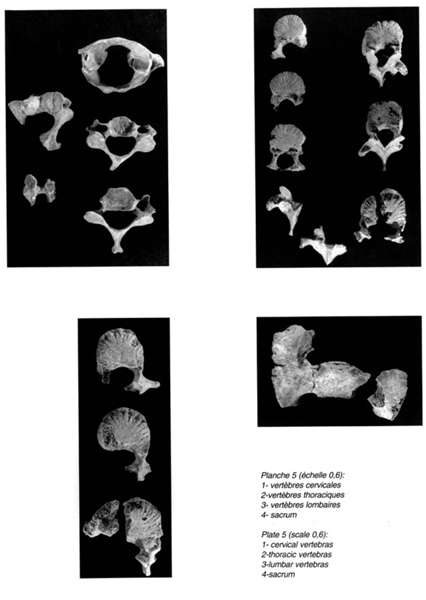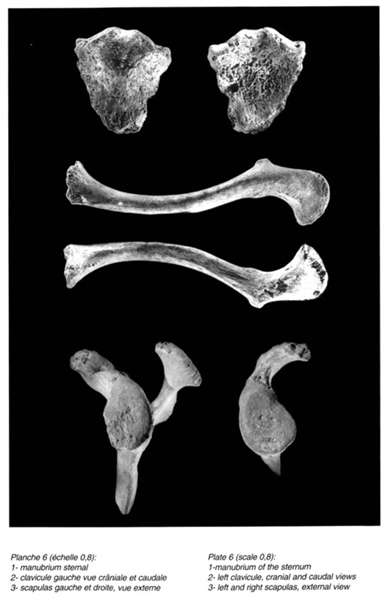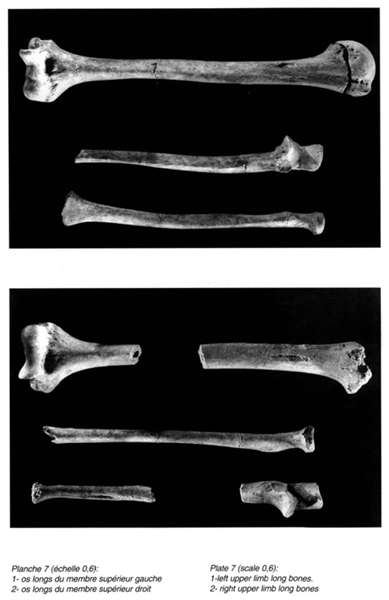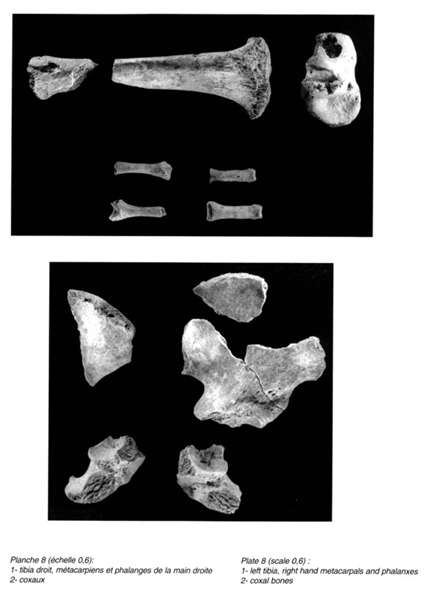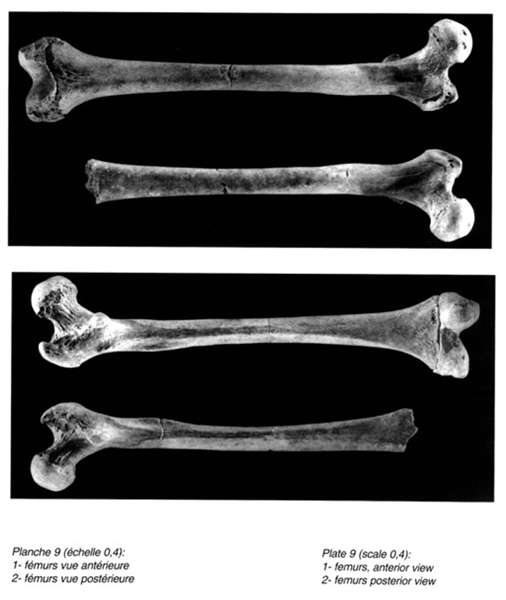Roc-de-Cave

La sépulture du Roc-de-Cave
Provenance: Roc-de-Cave (Saint-Cirq-Madelon, Lot) Magdalénien final
Photo: Don Hitchcock 2014
Source: Original on display at Le Musée National de Préhistoire, Les Eyzies-de-Tayac
La sépulture du Roc-de-Cave a été fouillée en 1928 dans des conditions difficiles. Longtemps délaissé car considéré comme douteux, ce squelette largement ocré, archéologiquement complet, vient de faire l'objet d'une étude qui a permis de bien le dater: 11 210 ± 140 B.P. Il s'agit probablement d'un(e) adolescent(e) âgé(e) de 15 à 18 ans, de sexe indéterminable, de stature moyenne (1,50 mètre). Le contexte archéologique (lamelles à dos courbe) et la présence de canines de cerf confirment bien son attribution culturelle à la fin du Magdalénien.
The burial of the Roc-de-Cave was excavated in 1928 under difficult conditions. Long neglected, this skeleton was sprinkled with ochre, is archaeologically complete, and came to be the object of study which has permitted the skeleton to be well dated: 11 210 ± 140 BP. It is probably an adolescent aged between 15 to 18 years, sex indeterminate, and is of average stature (1.50 m). The archaeological context (curve-backed blades) and the presence of deer teeth confirm its cultural attribution to the late Magdalenian.
Photo: Don Hitchcock 2008
Source: Original on display at Le Musée National de Préhistoire, Les Eyzies-de-Tayac
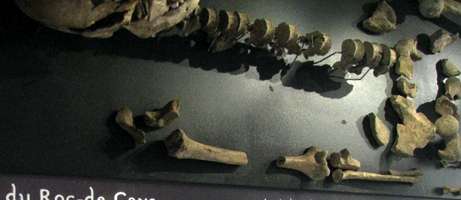

The skeleton has been very well presented.
Photo: Don Hitchcock 2008
Source: Original on display at Le Musée National de Préhistoire, Les Eyzies-de-Tayac
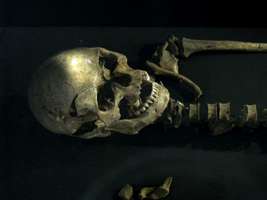
The skull has been well preserved.
In 1928, M.Vialle found the skeleton, probably a burial, just outside 'Roc-de-Cave' cave, in the vallon de la Melve, Saint Cirq Madelon (Lot). (J.Blanchard 1934, Une nouvelle Lampe paléolithique (Saint Cirq-Madelon), Bull. Soc. prehist. fr. 31: 515.) Artifacts belonging to several phases of the Upper Palaeolithic (Solutrean, Magdalenian) and the Azilian have been found in the cave. The human material is attributed, with reservation, to the Azilian. d.Peyrony 1949, le perigord prehistorique, perigueux: 21.
Photo: Don Hitchcock 2008
Source: Original on display at Le Musée National de Préhistoire, Les Eyzies-de-Tayac
Text: Adapted from http://gbs.ur-plaza.osaka-cu.ac.jp/kaseki/europe/roc_de_cave.php
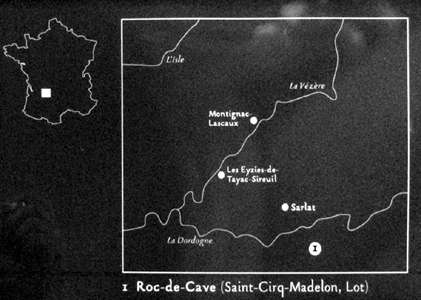
Map of the area in which the skeleton was found.
Photo: Don Hitchcock 2008
Source: Display at Le Musée National de Préhistoire, Les Eyzies-de-Tayac
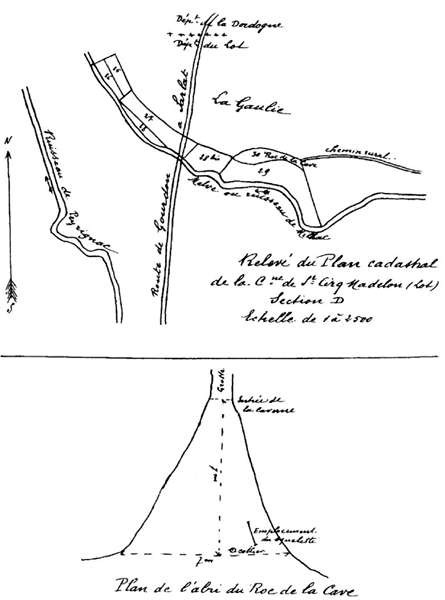
Detailed map of the area in which the skeleton was found, and a plan of the abri.
Photo: D. Peyrony, archives MNP, in Bresson (2000)
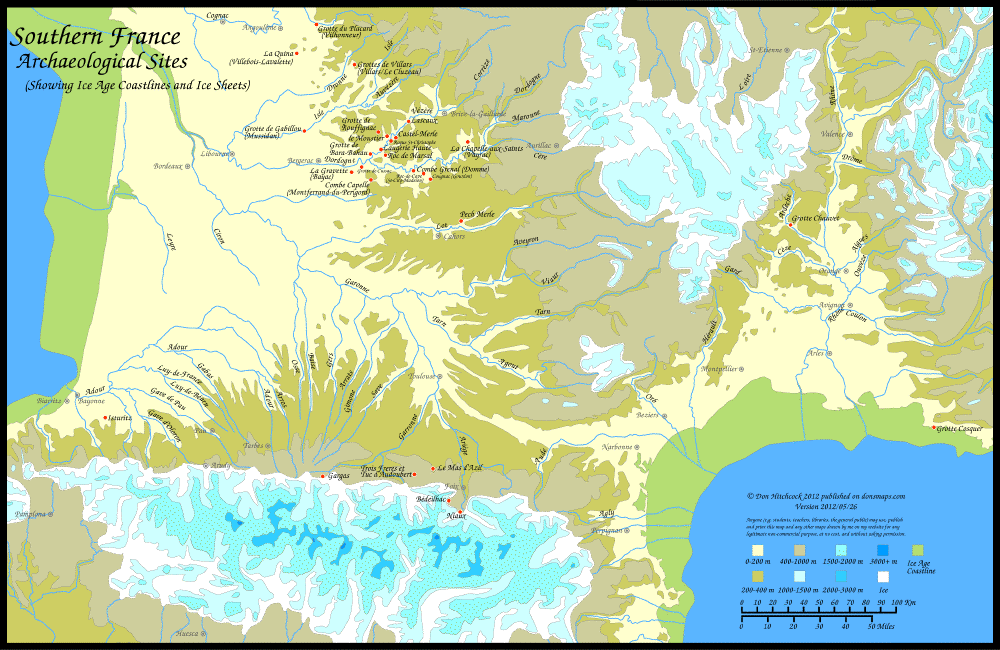
Note - Use this pdf file if you wish to print this map on a single sheet of paper.
Photo: Don Hitchcock version 2012/05/26
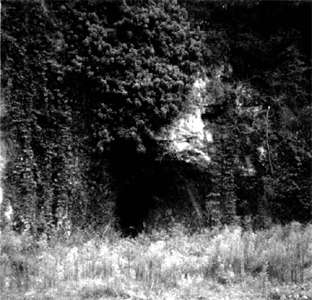
Photo of the abri.
Photo: A. Morala in Bresson (2000)
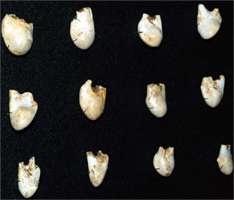
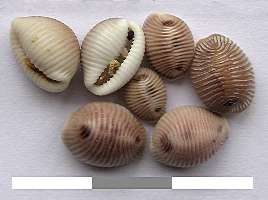
La parure du Roc-de-Cave Canines de cervidés percées et gravées, perles en stéatite et coquillages (Trivia europea)
The parure of Roc-de-Cave includes 70 pierced and engraved deer canine teeth, soapstone beads and shells (Trivia europa, now called Trivia monacha)
Photo: (Left) http://www.musee-prehistoire-eyzies.fr/pages/page_id19260_u1l2.htm
Photo: (Right) Wikipedia, Trivia monacha shells, hand-picked from beachdrift, from near Aberffraw, Anglesey. Scale is in cm. Trivia monacha, also known as the European cowrie or spotted cowrie, is a species of small sea snail, a marine gastropod mollusc in the family Triviidae.
Photos below from:
Bresson (2000)
References
- Bresson F., 2000: Le Squelette du Roc-de-cave (Saint-Cirq-Madelon, Lot) Paleo no 12, Decembre 2000 pp29 - 60
Back to Don's Maps
 Back to Archaeological Sites
Back to Archaeological Sites
